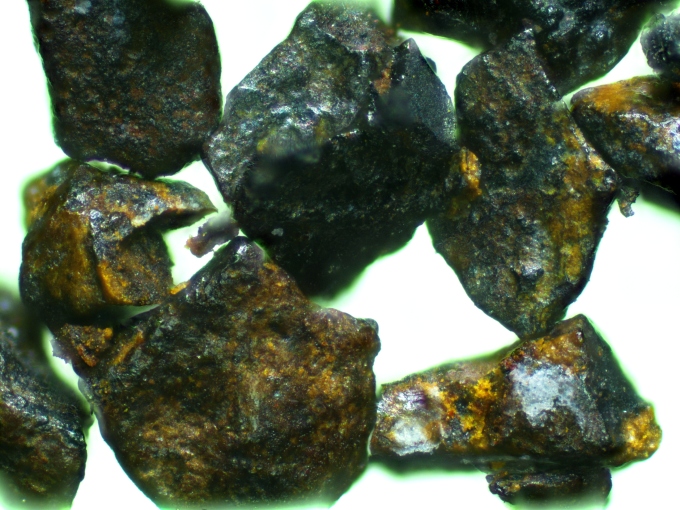Physicist sifts through sandy shrapnel
June 4, 2014
Share
By Anne Craig, Communications Officer
Once the site of the Second World War’s bloodiest battles, the beaches of Normandy are now a mecca of sunbathing and swimming. Lurking in the sand, though, is a time capsule of those battles.
Kevin Robbie (Physics) is examining the shrapnel-containing sand on the Normandy beaches by using microscopic imaging to take photographs that are both scientific and artistic. He is working with professional photographer Donald Weber, in a project that combines landscape photography of the beaches with Dr. Robbie’s microscopic photographs of the sand.
 Optical microscope image of several pieces of steel shrapnel, showing rust (orange), and salt (white) on the surface.
Optical microscope image of several pieces of steel shrapnel, showing rust (orange), and salt (white) on the surface.“Several aspects inspired me to work on this project: the historical importance of the D-Day invasion as a geopolitical event, the artistic juxtaposition of the peaceful appearance of the beaches in the landscape photography with the rough and violent-seeming appearance of the microscopic photographs of the shrapnel grains in the sand,” says Dr. Robbie.
“The shrapnel and sand provides an environmental commentary about the inconspicuous evidence that man-made products of war will remain in these sands for centuries, and the remarkable fact that solidified bubbles of molten iron form nearly-identical spherical particles in the explosions of both artillery shells and meteorites.”
 Kevin Robbie
Kevin RobbieAmong the ordinary grains of sand, Dr. Robbie found rounded spheres of iron (called microspherules) no larger than a period on a printed page. Although these microspherules are sometimes produced from meteorites exploding in the upper atmosphere, they can also occur with bomb and artillery explosions.
The next phase of Dr. Robbie’s research will be a more thorough analysis of the microspherules he observed – quantifying the number of particles per kilogram of sand and distinguishing man-made vs. meteorite origin conclusively.
“In my work, I’m always looking at small things that I don’t see other than through the electron microscope so it’s neat for me to see a piece of history,” says Dr. Robbie. “The remnants of this battle over 60 years ago are still sitting around in the sand.”
The research was published in Canadian Geographic Compass blog.